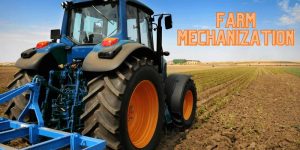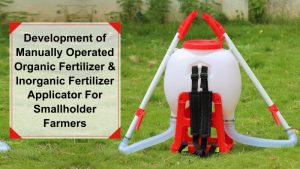Due to inadequate financial protection, many farmers nowadays are moving away from agriculture and into other occupations. Farmers face a lot of difficulties as a result of climatic change. In India, more than 95% of farmers still practice traditional farming methods. In order to increase our agricultural profits, we must use contemporary farming methods like hydroponic farming and polyhouse farming. We pay other nations very well for their fruits, vegetables, and flowers when we bring them into India. I believe that modern farming methods, such as greenhouse farming, will raise the standard of living for Indian farmers if we employ them to cultivate these flowers, vegetables, and fruits in our country.
What is Greenhouse Farming?
A greenhouse is a framed building covered in transparent material that can grow crops under partially or completely controlled climatic conditions to achieve the best growth and productivity. The method of giving plants a favorable atmosphere is known as greenhouse technology. The greenhouse industry is the one with the fastest global growth among all agricultural producing operations. The most lucrative business prospects are found in greenhouses, which are like gold mines. The primary purposes of a greenhouse are the cultivation of annual and perennial crops, the production of premium flowers and vegetables, and the development of nurseries using tissue culture.
Types of Greenhouses:
Greenhouses come in a variety of shapes, sizes, materials, and ventilation configurations. Each greenhouse has a distinct benefit. A variety of greenhouse designs are available to meet various requirements. Typically, a sawtooth Natural Vent is used in India Cut flowers and vegetables are produced in greenhouses.
A) Shape-based greenhouse type
- Greenhouse of the sawtooth kind
- A greenhouse with ridges and furrows
- A greenhouse with uneven spans
- A greenhouse with even spans.
- Sawtooth design.
- Quonset hut greenhouse
- A greenhouse with interlocking ridges.
- A ground-up greenhouse
B) Type of greenhouse determined by the construction
Buildings with wooden frames and pipe frames are examples.
depends on the materials used for the covering.
C) A Greenhouse made of plastic or glass
Low-cost or low-tech greenhouse
A basic structure built of locally available materials like bamboo and timber makes up a low-cost greenhouse. UV film is used to make the cladding materials.
Contrary to traditional or high-tech greenhouses, this one lacks a specialized control system for regulating the environment inside the building. However, it is possible to raise or lower the temperature and humidity using straightforward methods. Using shade materials like nets can even reduce the brightness of the light. By opening the side walls, the temperature can be decreased throughout the summer.
Medium-tech Greenhouse
Users of greenhouses favor manually or semi-automatically operated control systems due to the low investment. For the construction of this kind of greenhouse, galvanized iron (G.I.) pipes are employed. The canopy cover is fastened to the framework with the aid of screws. The entire building is securely fastened to the ground in order to withstand wind disruption. Exhaust fans with controls are used to manage the temperature. The greenhouse is also maintained at an agreeable humidity level using misting devices and evaporative cooling pads.
High-tech Greenhouse
A high-tech greenhouse has been designed in which the entire equipment that regulates the environmental conditions is assisted to run autonomously. This helps to solve some of the problems that a medium-tech greenhouse has.
The price of greenhouse:
- Low-cost greenhouse for Rs. 300 to 500 per square meter without a fan.
- Without automation, a medium-priced greenhouse with a pad and fan system would cost between Rs. 800 and Rs. 1100 per m2.
- Costly greenhouses with fully automatic control systems that range in price from Rs. 2000 to Rs. 3500 per m2
Benefits of a greenhouse
- Depending on the type of greenhouse, the type of crop, and the environmental control capabilities, the yield could be 10–12 times more than that of outdoor farming.
- In a greenhouse, crops are more reliable.
- ideal for harvests of veggies and flowers.
- production of floricultural crops throughout the year.
- production of fruit and vegetable crops during the off-season.
- It is possible to continuously create transplants that are genetically superior and disease-free.
- effective use of chemicals and pesticides to manage disease and pests.
- Crop water needs are extremely little and manageable.
How to start Greenhouse Farming?
Investments in infrastructure, machinery, manpower, and raw materials are significant requirements for greenhouse farming. Technical, economic, and marketing expertise are the three areas in which a greenhouse farmer must be knowledgeable to succeed. Before they launch their own firm, they must finish a training course.
What is the difference between greenhouse and Polyhouse?
Between a polyhouse and a greenhouse, there is no such distinction. The term “greenhouse” refers to a variety of structures; a polyhouse is one of these types of greenhouses with polyethylene as its primary construction material.
When compared to other types of greenhouses, the polyhouse is more durable.
The practice of growing crops in a greenhouse ecosystem is referred to as greenhouse farming. Here is a comprehensive guide to all greenhouse types, their characteristics, and prices.
In Bijnor, Uttar Pradesh, Greenhouse Farming is Well-Known
Greenhouses, are commonly referred to as polyhouses. Farmers in the Bijnor district developed an interest in greenhouse farming. A polyhouse is a piece of land with a plastic greenhouse over it where crops are produced.
As the sun’s solar radiation warms the plants, soil, and other elements inside the building more quickly, the inside warms up. Additionally, crops are safeguarded against the negative impacts of weather, such as erroneous rain and hail.
Farmers will receive subsidies to use polyhouses under the National Horticulture Mission. On ten bighas of land, Himanshu Tyagi, a 35-year-old MBA graduate, has constructed four polyhouses. I spent Rs 1 crore on these four polyhouses in all. He raised capsicum in the greenhouse and roses in two polyhouses.
Key points to be considered for selecting a site for greenhouse farming:
1. The ideal soil PH ranges from 5.5 to 6.5, while the ideal EC (volatility) is from 0.3 to 0.5 mm cm/cm
2. A constant supply of high-quality water is accessible.
3. The irrigation water samples must have a pH between 5.5 and 7.0 and an E.C. between 0.1 and 0.3
4. The location should be free of pollutants.
5. Roads are necessary for market shipping and transit of goods.
6. The location ought to have enough space for the anticipated expansion.
7. It should be simple and affordable to find workers.
8. There ought to be a top-notch communication infrastructure in place.
9. The soil should have excellent drainage.
To Know more about Greenhouse farming and other crops, install the KhetiGuru application that provides you with all agricultural information and also gives you expert advice for farming-related problems. To get the tractor, tractor price related information visit the KhetiGaadi website.




